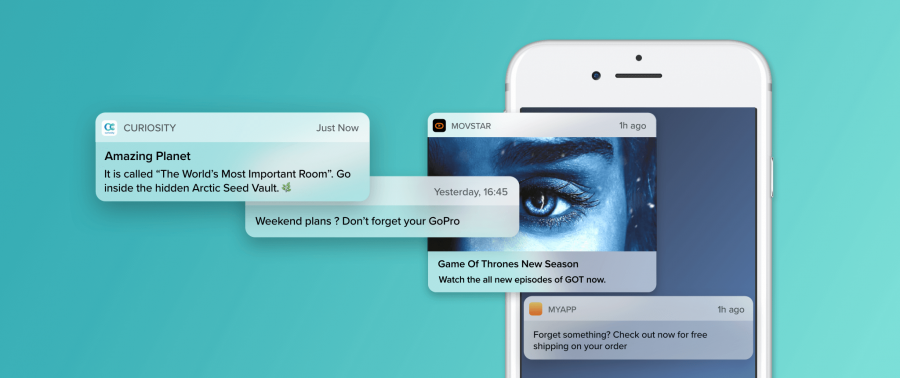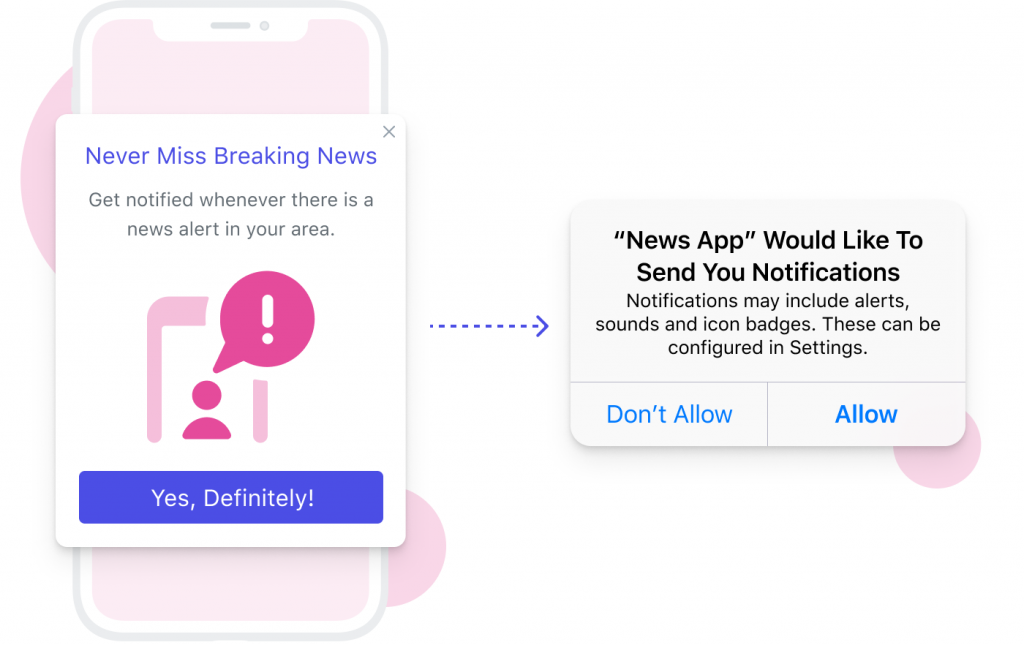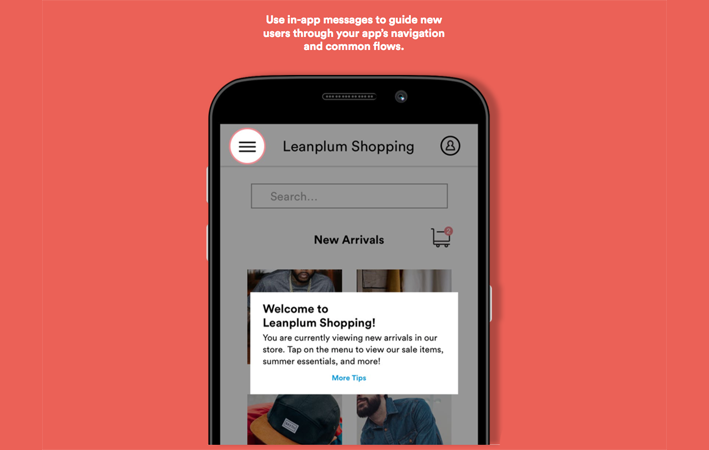Mobile CRM: 8 Advice for a Successful Strategy


Mobile CRM is a relatively new concept, but it is becoming increasingly important as a tool for marketers, product managers, and developers. That is why we are going to cover the eight CRM best practices to get you started.
“It costs 7 times more to acquire a new user than to retain an existing one”
This well-known statistic can be found in many marketing and business books and blogs. However, very few companies—startups in particular—seem to understand its importance. On the contrary, they tend to focus their efforts more on customer acquisition rather than retention and CRM – Customer Relationship Management.
When looking at the mobile channel, the statistics are even more worrying:
- 79% of users who installed an app, use it only once
- The retention rate of an app on day 1 is 21% on average
- After 90 days from the app install, only 1,7% of users are still active
From these figures, it clearly appears that companies, mostly those active in the mobile industry, invest a great deal in acquiring users who do not use their products and their apps. For this very reason, it is essential to place CRM—Customer Relationship Management—in a central role.
What Is Mobile CRM?
The term mobile CRM refers to all the communication and engagement activities with those users who downloaded an app. The communication can be performed through different messaging channels on mobile devices (and in some cases complementing desktop activities)—both inside and outside the app, with the aim of increasing the existing audience engagement.
Why Is Mobile CRM Important?
Through mobile CRM campaigns—and in general, through an app—we are able to communicate with our users at any time and wherever they are. Meaning that we can take advantage of the powerful principles of geolocation and real-time communication.
Thanks to CRM, we do not have to wait until our users are back home in front of their computers to reach them. But, we can do so when and where it is most appropriate for the purpose of our business.
Targeted mobile CRM strategies give marketers an opportunity to improve the retention rate of acquired users. Leading to an increasing app usage over time, thus reducing the churn rate (i.e., the number of users who leave the app).
Moreover, mobile CRM has a positive impact on conversion rates for each conversion funnel step by raising the number of users who take certain actions after installation (registration, purchases, subscriptions, etc.).
By enhancing those figures, the final result will be an LTV (Lifetime Value) increase of our user base and, therefore, the maximization of our advertising spending and ROI.
Basically, marketers and companies with mobile CRM campaigns have the opportunity to support their business goals. They can do so by building long-term relationships with their users and increasing the chances that they will take the desired in-app actions after the download.
Related: 5 Trends to Master Mobile CRM in 2023
The Mobile CRM Channels
We can choose among different channels on the basis of what we need to communicate to our customers—push notifications, in-app messages, and email are among the most common tools. You could improve your CRM also by sending “old school” text messages, but they are not so widely used. There are other tools, such as Inbox App, offered by various mobile CRM tools on the market.
So now, let’s have a look at the top three CRM channels.
A) Push Notifications
Push notifications appear on the phone’s lock screen through a warning banner shown on the screen. Particularly successful for time-sensitive information—push notifications are structured on the basis of customer activity, and they usually get a response rate 4-7 times higher than the re-engagement communication campaigns (retargeting).


Unfortunately, for iOS users, push notifications can only be sent after users have consented to receive notifications (notification opt-in).
The best practice is to “announce” a request for consent by sending the notification with a pre-screen (on the left) to show and inform users about the pros of allowing push notifications.
Once the user accepts the notification that appears on the first screen, he will see the original Apple prompt (on the right).
Related: How to Ensure an Effective User Onboarding in 2023


B) In-App Messages
In-app messages are basically screens consisting of texts and sometimes pictures. They are displayed directly within the application when the app is opened (or when a specific action is completed by the user inside the app).
It is important to underline that this kind of communication does not require specific opt-in permission from the user, thus making it a very powerful in-app communication tool. Moreover, in-app messages are an excellent complement to push notifications, but they, unfortunately, cannot stimulate the app’s opening.
Besides opening the app, in-app messages can be activated by specific in-app actions (for example, the user makes a purchase, or the user unlocks a level of a game, etc.).


As mentioned before, in-app messages are often linked to push notifications. The aim is to integrate the message provided with the push notification (for example, to explain the terms of a discount or to give more info about a loyalty program).


C) Email
Even for mobile applications, emails still represent (more than ever) an important and powerful tool of communication with our customers. Especially to those who have not yet given their consent to receive push notifications.
From this perspective, emails are particularly important for all those transactional communications. Moreover, compared to notifications, emails enable us to communicate much longer and articulate texts. Therefore they can be used to send multiple messages, explanations for promotions, useful content to the users, and things that would be too long for push notifications.
Mobile CRM: The Recipe for Success
As with all mobile marketing activities, there is no precise formula that works for every app and that guarantees certain results. However, there are general best practices to follow that if applied, can generate good chances of success.
1. Customize the Message to Increase the Engagement
Whether it is a sporadic notification or a more articulate campaign, it is advisable to customize the message as much as possible. This is not limited to referring to the customers using their first name—but also to using all the data you have available to create specific segments. All of that is based on the activity of the users themselves and on the frequency of use and purchase.
For instance, for an e-commerce app, it is recommended to base our communications according to the products that the user has visited or previously purchased. For example, refining the segmentation with frequency and recency data to create segments of more or less active users.
If we were to compare CRM activities to a weapon, we would have to think more of a sniper rifle that hits specific targets rather than a machine gun that shoots in the crowd.
Mobile CRM: The Case We Had
For example, we recently received a push notification from the GialloZafferano app.
The original notification (on the left in the image below) was completely lacking in customization, not referencing any of our previous in-app actions. The text was simply “Lasagne al Pistacchio”. Meaning if the goal was to generate app openings, we can easily say that it most likely failed.
The customization of the message, combined with a call-to-action that invites the user to open the app or in this case, contextualize the proposed recipe, would definitely have a higher engagement. What do you think the effect would have been if the CRM team had customized as suggested in the version on the right—where we added an image and some more personalization?


A user who sees a groomed notification, who feels addressed in the communication and gets a specific suggestion (“for your weekend”) will certainly be more willing to click on the notification.
Instead, below there is an example of perfect customization in the context of the so-called “abandoned cart.” Where we can see the user’s name and the product left in the cart, which is, very conveniently, almost out of stock. And, of course, a final call to action (CTA).


2. Use Articulate Communications
The message channels listed above are not mutually excluded but should rather be considered as complementary means. It is advisable to employ each of them to achieve a common goal.
For example, if we want to communicate a special promotion that will happen exclusively during the weekend, we can send an informative email at the beginning of the week, a push notification as a reminder close to the weekend, and show an in-app message every time the user opens the app.
We should not worry about being repetitive as, in fact, emails are often ignored (or worse, they end up in spam). Moreover, not all users opt-in to receive push notifications. Therefore, the number of users who will see all communications on the various channels is quite limited.
However, it is highly important, when using all communication channels, to adopt a consistent message with the same information and promotions.
3. A “Journey” for Every Objective
Many mobile marketers use the term “Journey” in the context of CRM to describe a set of omnichannel messages, aimed at leading the user to take a specific action.
For instance, we can create a communication journey aimed at the user’s registration, the first order, or even the referral of friends. In these cases, it is important to have only one objective for each journey—this way, we can have coherent and targeted messages and track the results correctly.
Although this might seem like an obvious consideration, not all companies adopt these best practices and miss out on opportunities to improve conversion rates. For example, Winelivery, one of our partners, has increased its conversion from download to first purchase by 27%, thanks to a targeted strategy of CRM journeys.
4. Use Deep Links
Deep links are a simple way to redirect users to a specific page on the mobile app, dramatically improving the overall user experience.
Suppose we receive a push notification related to an item on our wish list that is back in stock. Without the implementation of a deep link, clicking on the notification would redirect us to the app’s homepage. Then we would have to return to the product list to search for the item in question, thus being annoying. At that point, we could even decide that it is not worth it and close the app without buying the product.
With deep linking, on the other hand, clicking on the notification would redirect us to the product page where we could directly make our purchase.
Deep links, therefore, make transitions smoother and improve the user experience. It is proven that those apps that implement deep links get to double user retention and experience an average 66% increase in conversions.
Deep links also work very well when we want to take the user to a specific page in the app (the registration page, for example) or when we want to introduce a new feature.
5. Do Not Focus on Conversions Only
Mobile CRM is a useful tool, as we have seen, to increase conversion rates and boost the business ROI, but our communication should not focus only on this.
If the messages we give are only aimed at generating a purchase, it won’t take long for our beloved users to get tired, and they might opt-out from receiving notifications or, even worse, uninstall the app.
It is advisable, from time to time, to communicate useful messages, ask for the user’s opinion, or simply wish them a happy birthday. In this way, we will give less of a feeling that the only thing we care about is our customers’ money.
6. Plan the CRM From the Beginning
Too many companies do not consider mobile CRM and engagement activities until they realize that they are losing the majority of the acquired users, for whom they often invested a lot of money.
This passive approach is wrong, as mobile CRM should be taken into consideration (even when not implemented) from the beginning of the mobile marketing activities. In this regard, we have explored the topic in a webinar organized in collaboration with Leanplum, a well-known mobile CRM tool, along with other experts from BendingSpoons and MyPostCard.
7. Coordinate CRM With Paid User Acquisition
We also need to remember that the users we approach through mobile CRM are the same ones that are acquired by the Paid User Acquisition team. Although the teams responsible for Paid UA and retention are often not the same, the conversion journey of acquired users is unique.
Therefore it is recommended to coordinate the two activities in order to use the same tone of voice, but mostly to avoid communicating inconsistent messages (or offers).
8. A/B Test Like There Is No Tomorrow
As mentioned at the beginning of this section, there is no magic formula that works for all apps, so the watchword, even when it comes to mobile CRM practices, is never to get tired of A/B testing.
From the segmentation to the duration of a journey, through the tone of voice to the different times of the day—everything can be tested and can bring incredible results.
The Best Mobile CRM Tools
When we talk about CRM, it is important to specify whether it is a mobile-first activity or not because the needed tools can be very different for the two options.
For beginners, they should mark down that Firebase is not a mobile CRM tool. Moreover, Firebase allows you to send push notifications with a minimum of customization. Still, it lacks all the other necessary features to execute complex and articulated mobile CRM strategies, such as journeys.
At REPLUG, we have identified the following tools as the most complete for addressing all mobile user engagement needs.


Mobile CRM: Final Consideration
Mobile CRM definitely represents a powerful tool to maximize the Lifetime value (LTV) of our user base, thanks to the positive effects on the retention and conversion rate.
Through CRM, we can direct our users to perform a specific action but also to up-sell or cross-sell within the application itself to our existing users.
Obviously, as we have already pointed out, there is no magic spell in order to obtain immediate results. However, through targeted strategies based on user base segmentation and message customization, we will be able to see positive effects right from the first weeks.
Mobile CRM is a continuous process of testing and improvement. It is fundamental to adapt our communication to the needs of our user base and to catch up, but also to react and be ready for the changing of external factors, such as seasonality, competition, and major events.
Would you like to implement a CRM strategy for your mobile app, or improve communication with your mobile users? Get in touch with us by clicking here.
Originally published on June 30, 2021. Updated on October 10, 2022.